If you're looking for a tool to help you with your DIY woodworking projects, a hand planer could be what you need. Hand planers are designed to smooth surfaces, restore old furniture, and make rough lumber flat, straight, and square. However, with so many models in the market, how do you know which one is the best hand planer for beginners?
Before buying a hand planer, there are several factors to consider. Firstly, the blade's width determines the planer's versatility, so opt for a model with a blade width of at least two inches. Secondly, the planer's weight influences its ease of use, so choose one that is neither too heavy nor too light to maneuver. Other aspects to consider include the length, handle design, and blade material.
To help you make the right decision, ask yourself the following questions. What type of projects are you planning to work on? Do you have any experience using hand planers? Are you looking for a cheaper option or willing to invest in a higher quality planer? Answering these questions can help you narrow down your options and choose the best hand planer for your needs.
In conclusion, finding the best hand planer for beginners can be a daunting task but following the above guidelines can make it easier. Don't rush into buying a planer without considering the factors above. Take your time, weigh your options, and make an informed decision that will get you started on your DIY woodworking projects.
10 Best Hand Planer For Beginners
| # | Product Image | Product Name | Product Notes | Check Price |
|---|---|---|---|---|
|
1
|
The product is ideal for smoothing and shaping wood surfaces.
|
|
||
|
2
|
The product is ideal for smoothing rough lumber and creating a flat surface on wood.
|
|
||
|
3
|
The product is ideal for planing wood surfaces to achieve a smooth finish and make alterations or repairs.
|
|
||
|
4
|
The product is ideal for smoothing and shaping wood surfaces with precision and accuracy.
|
|
||
|
5
|
This product is ideal for precise and smooth planing of wood surfaces.
|
|
||
|
6
|
Ideal for smoothing wood surfaces and removing high spots, with a kickstand and dual dust ports for easy use.
|
|
||
|
7
|
The product is ideal for smoothing and shaping wood surfaces.
|
|
||
|
8
|
Ideal for smoothing and shaping wood surfaces with precision, thanks to its high-speed steel blades and adjustable depth control.
|
|
||
|
9
|
The KAKURI hand plane is ideal for woodworking tasks such as chamfering and smoothing wood surfaces.
|
|
||
|
10
|
The product is ideal for smoothing and leveling wood surfaces, creating bevels, and reducing thickness.
|
|
1. Stanley Hand Planer, No.4, Smoothing (12-136)
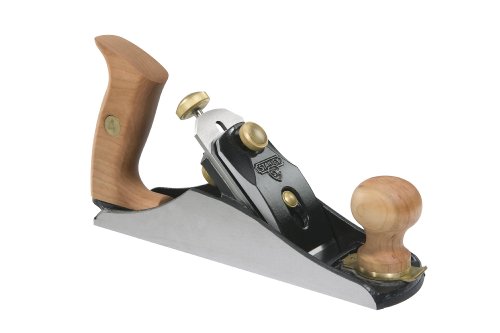
The woodworking hand planer is an essential tool for any woodworking enthusiast, and this particular model boasts some impressive features. Crafted from extra-thick 1/8-inch (3.18 mm) A2 steel, the iron of the hand planer is designed to provide excellent edge retention, making it a reliable option for frequent use.
The one-piece base and frog of the wood plane work together to virtually eliminate chatter, ensuring that the user can achieve smooth and precise results with ease. Additionally, the cherry wood handle and knob of the bench plane are designed with comfort in mind, making it easy to grip and maneuver for extended periods of time.
The Norris-type adjuster with lateral locking feature is an added bonus, providing the user with the ability to fine-tune the planer's performance to their specific needs. The adjustable throat plate is also a valuable feature, allowing the user to customize the planer's performance based on the type of wood they are working with.
If a replacement blade is ever needed, the 12-141 model is compatible and readily available. Overall, this hand planer is an excellent choice for woodworkers of all levels, offering durability, precision, and comfort in one convenient tool.
2. Stanley 1-12-137 62-Low Angle Sweetheart Jack Plane
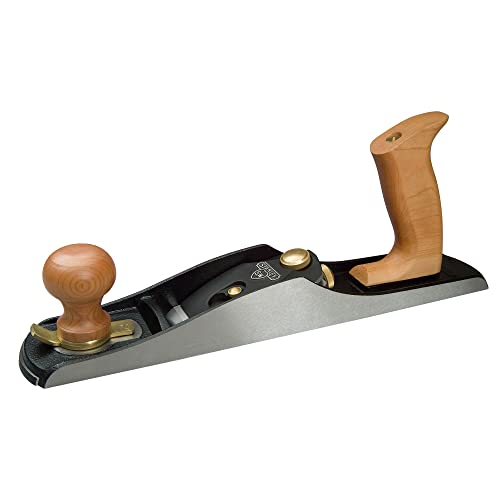
The woodworking community has been buzzing about the innovative features of this hand plane. Its one-piece base and frog design effectively reduces chatter, resulting in improved accuracy. This is a game-changer for woodworkers who value precision in their work. Additionally, the plane boasts a patented lateral adjustment locking feature, which means that adjustments can be made easily and securely. No more worrying about the blade shifting or losing its position during use.
The plane is made with ductile iron castings, which provide excellent weight and durability. This ensures that the plane can withstand heavy use and will last for years to come. The iron castings also contribute to the plane's stability, allowing for smooth and consistent planing.
3. Makita Xpk01z 18v Lxt Lithium-Ion Cordless 3-1/4-Inch Planer, Tool Only
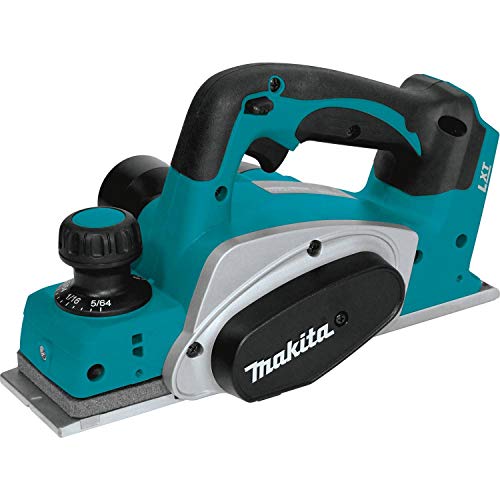
Introducing a powerful and efficient planer, perfect for tackling any woodworking project with ease. This planer is designed to handle planes up to 3-1/4" wide and 5/64" deep in a single pass, making it a versatile and time-saving tool.
Featuring a 2-blade cutter head with double edge carbide blades, this planer delivers outstanding performance and a smooth finish. Its high power-to-weight ratio makes it easy to handle and maneuver, weighing in at only 7.4 lbs.
Equipped with a 14,000 RPM motor, this planer is engineered for fast stock removal, allowing you to complete projects quickly and efficiently. The click depth adjustment knob with an easy-to-read scale offers precise depth adjustment settings ranging from 0" to 5/64", ensuring accuracy and consistency in every pass.
Whether you're a professional woodworker or a DIY enthusiast, this planer is an excellent investment. It is durable, reliable, and designed to deliver exceptional results every time. Get your hands on this planer and take your woodworking projects to the next level!
4. Wen 6530 6-Amp Electric Hand Planer, 3-1/4-Inch
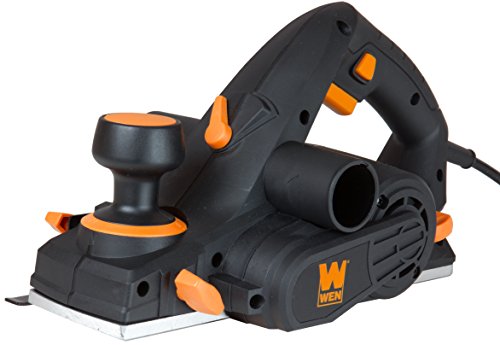
The power planer is a must-have tool for any woodworking enthusiast, and the 6 Amp motor provides up to 34,000 cuts per minute, making it a powerful and efficient option for anyone looking to tackle woodworking projects. With 16 positive stops, adjusting the cutting depth anywhere from 0 to 1/8 inches is effortless, allowing for precise and accurate cuts. The 5/16 inch rabbeting guide also enables users to make rabbets up to 1 inch in size.
The power planer's lightweight design, weighing in at a mere 6 pounds, makes it easy to handle and maneuver, minimizing fatigue during extended use. The included dust bag helps keep the workspace clean, ensuring that the user can focus solely on the task at hand. Additionally, the kickstand keeps the power planer upright and stable, preventing accidental damage to the blade.
The parallel fence bracket is another useful accessory that comes included with the power planer, allowing for straight and consistent cuts. And, with the added peace of mind of a 2-year warranty, users can feel confident in their purchase.
5. Stanley Hand Planer, Contractor Grade, Low Angle (12-960)
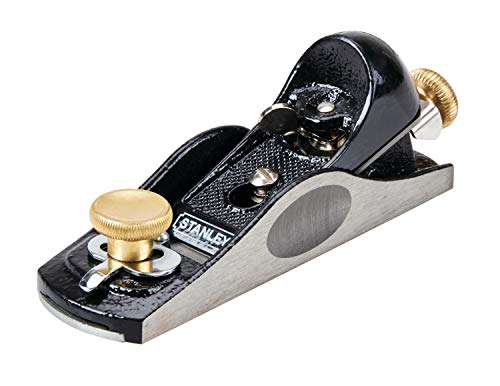
Introducing the 6-inch low angle plane with a 1-3/8-inch cutter, an essential tool for any woodworking enthusiast. This plane features a fully adjustable cutter that rests at 13.5 degrees, ensuring precise and accurate cuts each time.
Crafted with a gray, cast-iron base, this plane boasts precision-ground sides and bottom for a smooth and even finish. The durable epoxy coating provides long-lasting protection against wear and tear, ensuring that this tool remains in excellent condition for years to come.
Thanks to its quick-release cam-lock, the iron removal process is a breeze. Simply release the cam-lock to remove the iron quickly and easily, allowing you to focus on your woodworking project.
Measuring at 6 inches long with a 1-3/8-inch cutter, this low angle plane is compact and easy to handle, making it perfect for both novice and experienced woodworkers alike. Additionally, this product comes with a limited lifetime warranty, giving you peace of mind and confidence in your purchase.
6. Ryobi Hpl52k 6 Amp 16,500 Rpm 3 1/4" Corded Hand Planer W/ Kickstand And Dual Dust Ports
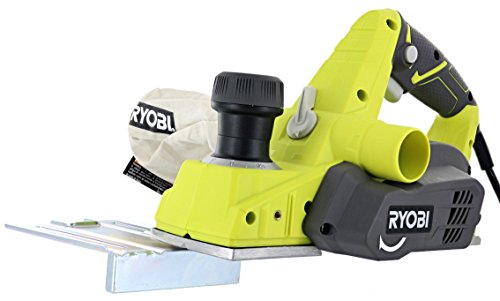
This woodworking planer is a versatile tool that will help you achieve maximum precision in your projects. Its adjustable depth feature allows you to set the depth from 0-1/8" in 1/96” increments, which is ideal for tackling a wide range of woodworking tasks. Additionally, the planer features a Gripzone Overmold that provides a rubberized grip, allowing for precise handling even in slippery conditions.
When it comes to safety, this planer has got you covered. The lock-off button prevents accidental activation, which can save you from ruining your work or causing damage to the equipment or yourself. Moreover, the dual exhaust ports on either side of the unit let you choose which side to blow chips out of, depending on the side you stand on while working.
Finally, the planer also features a rear-mounted kickstand made of plastic. This kickstand prevents the planer from scuffing or marring your work surfaces, which is particularly useful when working on delicate projects.
7. Stanley Hand Planer, Black (12-220)
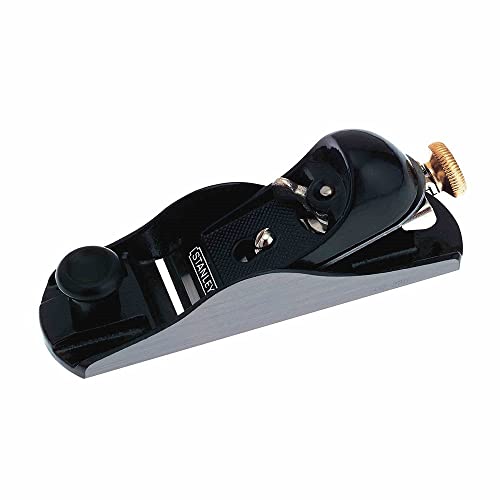
The ST Plane Block is a versatile and reliable tool designed for efficient and precise planing. The product is available in two models, the 12-247 and the 12-220, both of which feature machined sides for optimal accuracy and consistency.
The cutter of the ST Plane Block is set at a 21° angle, which makes it ideal for cross-grain planing. Users can easily adjust the depth of cut and alignment of the cutter to their specific needs, allowing for greater control and customization.
The base of the ST Plane Block is constructed from high-quality, gray cast-iron and features precision-ground sides and bottom for added stability and durability. The base is also coated with a durable epoxy finish, ensuring long-lasting protection against wear and tear.
With a Limited Lifetime Warranty, the ST Plane Block is a reliable investment for those seeking a high-quality and efficient planing tool. Whether you're a professional woodworker or a DIY enthusiast, the ST Plane Block is a versatile and essential addition to your toolkit.
8. Porter-Cable Hand Planer, 6-Amp, 5/64-Inch (Pc60thp)
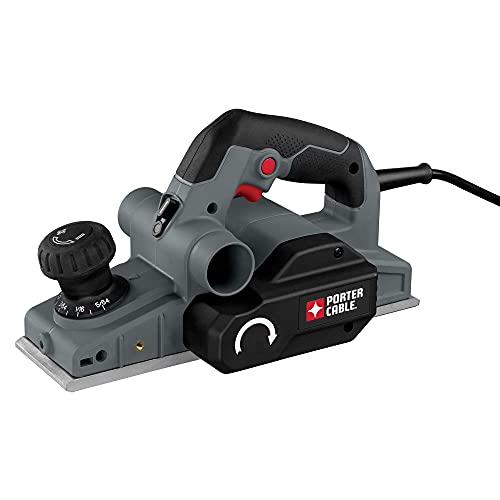
The electric hand planer is a powerful tool that is designed to provide smooth cutting in hard materials. It features a heavy-duty 6 amp motor that provides a powerful cutting performance, making it ideal for use on a range of materials. With a speed of 16,500 rpm, this hand planer is capable of removing material quickly and efficiently.
One of the key features of this hand planer is its dual side dust extraction system. This allows for extraction on either side of the tool, ensuring that the work area remains clean and free from debris. This is particularly useful when working in confined spaces.
The overmold depth knob with 10 positive steps is another standout feature of this hand planer. It provides better planer control and allows for multiple depth control settings, making it easy to achieve the desired depth of cut. This feature is particularly useful when working on different types of materials.
The hand planer also features 3 chamfering grooves, which provide options for edge chamfering. This is particularly useful when working on projects that require a clean and professional finish. The 11.5-inch cast aluminum shoe provides added control and better finish quality, ensuring that the end result is of the highest standard.
With a depth of cut of 5/64-inch, this hand planer is capable of removing excess material in less time, making it ideal for use on large projects. The heavy-duty 6 amp motor ensures that the hand planer is able to handle even the toughest materials, while the dual side dust extraction system and overmold depth knob with 10 positive steps make it easy to use and control.
9. Small But Mighty Japanese Wood Planer
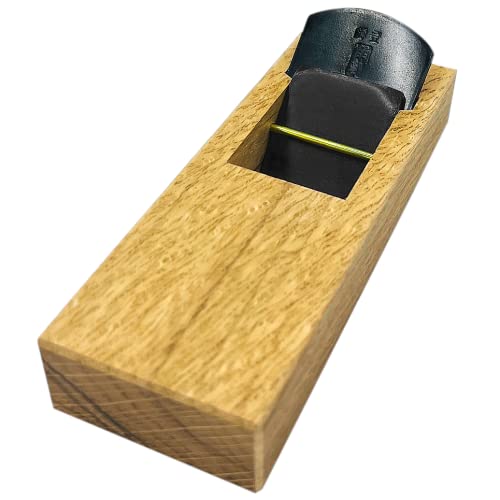
The Japanese Wooden Pull Plane Kanna is an exceptional woodworking manual planer designed to provide a smooth surface finish on wood. This hand tool is perfect for creating smooth chamfers by polishing the wood. Unlike other planes that require pushing, the pull plane operates by pulling, which makes it easier to apply force evenly and achieve accurate and efficient straight carpentry work. This feature makes it ideal for professional carpenters and home DIY woodworkers.
The pull plane’s mini size makes it easy to handle and ideal for chamfering the corner of the wood. It is also possible to make angled shaves with it. Because it can be operated with one hand, it is useful for precision work. Additionally, the portable size makes it convenient for carrying around.
This top-quality Japanese tool is made using only high-grade materials sourced from Japan. The plane blade is razor-sharp and durable, providing a long-lasting solution for your woodworking needs. It is possible to restore the sharpness of the blade by sharpening it with a whetstone. Also, the wooden body of the plane is heavy-duty and has excellent wear resistance. All KAKURI brand products are manufactured in Japan and handcrafted by Japanese craftsmen, ensuring that they are of exceptional quality.
The KAKURI Official English instruction is included, making it easy for you to use the pull plane. The length of the blade is adjustable by hitting it with a hammer. Fine adjustment of the blade is necessary when using a Japanese plane. The product’s specifications include the following: Made in Japan, Body: Oak wood (Core), Blade: Japanese high carbon steel, and Size: 5.9 x 2.1 x 1.6 inches.
10. Makita Kp0810 3-1/4" Planer
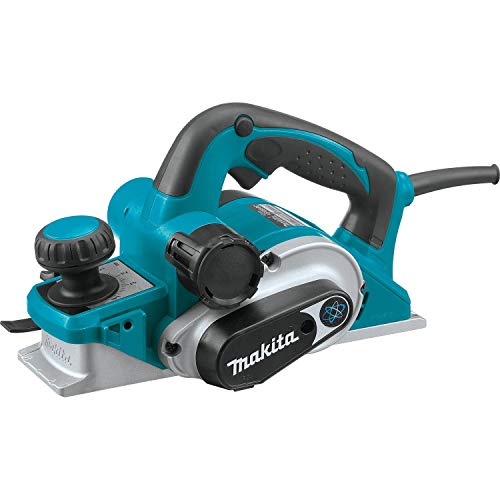
The planer is a powerful tool that can handle planes up to 3-1/4" wide and 5/32" deep in a single pass, making it efficient and time-saving. Equipped with a two-blade cutter head that operates at 16,000 RPM, it delivers a smooth finish and can remove stock quickly.
Chip ejection can be directed to either side of the tool, providing added convenience and flexibility. This feature allows users to easily remove wood shavings from the workspace without having to constantly move the tool around.
The depth adjust knob is another useful feature that allows for precise depth adjustment. It features an easy-to-read scale with click stops in 0.1mm increments, making it easy to achieve the desired depth with accuracy and consistency.
The lock-on/off button is conveniently located and can be operated from either side of the handle, making it easy to use for both right- and left-handed users. This feature ensures effortless control and safety while using the tool.
Best Hand Planer For Beginners FAQs
Are electric or manual hand planers better for beginners?
Both electric and manual hand planers have their own pros and cons, and which one is better for beginners ultimately depends on personal preference and the specific project at hand.
Electric hand planers are generally faster and more efficient, making them a good choice for larger projects or for those who are comfortable using power tools. They also tend to have adjustable depth settings, which can help beginners ensure they are not taking off too much material at once. However, they can be more expensive and require access to an electrical outlet.
Manual hand planers, on the other hand, are more affordable and do not require electricity, making them a good choice for beginners who may not have access to power tools or who prefer a more traditional approach. They can also be more precise and offer greater control over the amount of material being removed. However, they can be more physically demanding and require more effort to use.
Overall, the best choice for beginners will depend on their level of comfort with power tools, the size and complexity of the project, and personal preferences.
Can a beginner use a hand planer on different types of wood?
Yes, a beginner can use a hand planer on different types of wood. However, it is important to note that different types of wood have different characteristics and may require different techniques when using a hand planer.
For example, softer woods like pine may require a lighter touch and more frequent sharpening of the blade, while harder woods like oak may require a more aggressive approach and a sharper blade. It is also important to pay attention to the grain direction of the wood, as planing against the grain can result in tear-out and a rough surface.
As a beginner, it is recommended to start with a softer wood and practice using the hand planer to get a feel for the tool and its capabilities. With experience and experimentation, a beginner can become proficient in using a hand planer on a variety of wood types. It is also important to invest in a quality hand planer and to maintain it properly to ensure optimal performance.
How do I choose the right blade type for my hand planer as a beginner?
Choosing the right blade type for your hand planer as a beginner can be a bit overwhelming, but it's important to select the right one to ensure the best results. There are a few factors to consider when selecting a blade type, including the type of wood you'll be planing, the desired finish and the level of experience you have with hand planers.
For softer woods, such as pine or cedar, a high-speed steel blade may be suitable. However, if you're working with harder woods such as oak or maple, a carbide-tipped blade may be more appropriate as it will stay sharp for longer. Additionally, for a smoother finish, a blade with a higher number of cutting edges or teeth will be more effective.
It's also important to consider the blade size and the angle of the cutting edge. A larger blade will remove more material with each pass, but can be more difficult to control. A smaller blade may be more suitable for detailed work. The angle of the cutting edge can also impact the finish of your workpiece, with a lower angle producing a smoother finish.
Overall, as a beginner, it's best to start with a standard blade that is suitable for a range of woods, and experiment with different blade types and angles as you gain more experience and develop specific needs for your projects.
How do I maintain and care for my hand planer as a beginner?
Maintaining and caring for a hand planer is essential to ensure its longevity and performance. As a beginner, here are some steps you can take to maintain and care for your hand planer:
1. Keep it clean: After use, clean the blade and body of the planer with a dry cloth. This will prevent any rust or dirt buildup, which can affect its performance.
2. Sharpen the blade: A dull blade can cause tear-out and affect the quality of your work. Sharpen the blade regularly using a sharpening stone or a honing guide.
3. Adjust the blade: Make sure the blade is properly adjusted to ensure a smooth cut. Check the blade’s position and depth regularly, and adjust as needed.
4. Lubricate the moving parts: Use a lubricant on the moving parts of the planer such as the adjustment knobs, depth adjustment, and blade mechanism. This will ensure smooth operation and prevent any rust or corrosion.
5. Store it properly: After use, store the planer in a dry place to prevent rusting and damage.
By following these simple steps, you can maintain and care for your hand planer as a beginner, ensuring that it performs at its best for years to come.
What features should a beginner look for in a hand planer?
For a beginner, choosing a hand planer can be overwhelming because there are a lot of options available in the market. However, there are a few important features that you should consider before buying a hand planer. Firstly, the size of the planer should be appropriate for the user's needs. A smaller planer is easier to handle, while a larger planer is more suitable for larger projects. Secondly, the blade should be sharp and made of high-quality material such as carbon steel or high-speed steel. Thirdly, the planer should have an adjustable depth control mechanism that allows you to control the thickness of the shavings. Fourthly, the planer should have a comfortable grip that is easy to hold and control. Lastly, the planer should be durable and well-built, with a sturdy body that can withstand the rigors of constant use. By considering these features, a beginner can choose a hand planer that is easy to use and provides good results.
What is the best price range for a beginner hand planer?
For a beginner hand planer, the best price range would be between $30-$50. This price range offers a good balance between affordability and quality. You can find a variety of hand planers in this price range that are suitable for beginners and can perform basic woodworking tasks.
It is important to consider the quality of the hand planer when purchasing one. A poorly made hand planer can lead to frustrating and inefficient work, whereas a high-quality hand planer can last for years and provide precise cuts. Look for hand planers with a comfortable grip, sturdy construction, and adjustable features.
Remember, while it may be tempting to opt for a cheaper hand planer, investing a little extra money in a quality tool can save time and money in the long run. Additionally, a high-quality hand planer can make the difference between an enjoyable woodworking experience and a frustrating one.
What is the best size of hand planer for a beginner?
For a beginner, it is recommended to use a hand planer with a blade width of 2 to 2.5 inches. This size provides a good balance between maneuverability and surface area coverage. A wider blade may be more difficult to control, while a narrower blade may require more passes to cover a larger surface area.
Additionally, it is important to consider the weight of the hand planer. A lighter hand planer is easier to maneuver, but may not be as effective in removing larger amounts of material. Conversely, a heavier hand planer is more effective in removing material, but may be more difficult to control for a beginner.
Ultimately, the best size of hand planer for a beginner will depend on the specific project and personal preferences. It is recommended to try out a few different sizes and weights to determine what works best for the individual.
What is the best type of handle for a beginner hand planer?
The best type of handle for a beginner hand planer really depends on personal preference and comfort. Some people prefer a traditional wooden handle, which can provide a good grip and be comfortable to hold for longer periods of time. Others may prefer a plastic or rubber handle, which can offer a more ergonomic grip and reduce hand fatigue.
It is important to choose a handle that fits comfortably in your hand and allows you to maintain good control of the hand planer. You may also want to consider the weight and balance of the tool, as this can affect how easy it is to use and maneuver.
Overall, it is best to try out different types of handles and see what works best for you. It may be helpful to visit a hardware store or woodworking shop and hold different hand planers to get a feel for the different types of handles available.
Which hand planer brand is best for beginners?
For beginners, it is recommended to go for hand planers that are easy to use and maintain, and come at an affordable price. Based on those criteria, the best hand planer brand for beginners is Stanley. Stanley hand planers are known for their quality, durability, and ease of use. They come in various sizes and shapes to fit different needs and preferences. Stanley hand planers are also easy to adjust and maintain, which is important for beginners who are still learning how to use them properly. Another great thing about Stanley hand planers is that they are widely available, making it easy to find replacement parts and accessories. Overall, if you are a beginner looking for a reliable and affordable hand planer, you can't go wrong with Stanley.
Which safety measures should a beginner take when using a hand planer?
When using a hand planer, safety should always be a top priority. Here are some safety measures that beginners should take:
1. Wear safety goggles: Hand planers can produce wood chips and debris that may fly towards your face. Wearing safety goggles can protect your eyes from potential injury.
2. Use hearing protection: Hand planers can be noisy, and prolonged exposure to the noise can damage your hearing. Use earplugs or earmuffs to protect your ears.
3. Keep your hands away from the blade: Always keep your hands behind the blade and use a push block to guide the wood through the planer.
4. Secure the wood: Make sure the wood is securely clamped to the work surface before starting to plane. This will prevent the wood from moving and causing injury.
5. Check the blade: Before using the hand planer, make sure the blade is sharp and in good condition. A dull blade can cause the planer to kickback, which can be dangerous.
By following these safety measures, beginners can safely use a hand planer and enjoy the benefits of this versatile tool.
